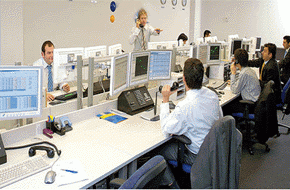

The AUD is down about 1.7% to 0.7130 since the NZ close on Tuesday, before yesterday’s Waitangi Day holiday. The currency slumped after RBA Governor Lowe, in a speech yesterday, said that the probabilities of a rate hike or cut “appear to be more evenly balanced”, a change in tone from his hither-to view that an increase in the policy rate was more likely than a decrease. The market had been wondering whether Lowe might convey such a tone, but had lost some conviction after the RBA’s official statement on Tuesday left its final (neutral) paragraph unchanged, even as it noted downside risks to the global and domestic growth outlooks. With Lowe opening the door to a possible rate cut, the market sees an increased chance of such a move occurring later this year. For November, around 21bps of easing is now priced in. Some will be wondering the impact for the NZ rates market, but over the past year Governor Orr has already conveyed such a tone (rates could go up or down) and the local market prices about 12bps of easing by November.
Rising iron ore prices have offered little support for the AUD, with the monetary policy outlook dominating sentiment for the currency. Iron ore prices rose to as high as $87.50 on the Singapore exchange, nearly a 2-year high, as the market fears an upcoming shortage following the disaster at a Brazilian mine owned by Vale.
The weak AUD has been somewhat of a drag on the NZD, which has been the second weakest performer over the past 24 hours of the majors, trading down to around 0.6840. A much stronger than expected GDT dairy auction has had little impact. The GDT price index rose by 6.7% and included an 8.4% increase in whole milk powder. We were expecting a flat result after the recent strong recovery and feared a softer result with the possibility of Chinese buyers on holiday. Stronger pricing will add to the chance of a higher dairy payout for the current season.
After Lowe’s dovish speech, NZD/AUD zipped up through the 0.96 mark and has hovered around that level since. The cross has now reached our 0.96 target for Q1 (and Q2) although that was in the context of an expected jump up in the trading range to 0.93-0.98, so there is every chance of some further gains being made.
In other news, President Trump’s State of the Union speech didn’t cause any ripples in the market, with no additional news on the US-China trade war or comfort that another government shutdown can be averted mid-month.
On the economic front, Germany factory orders continued to fall and were again weaker than expected in December, indicating that the economy was perilously close to recession in the second half of last year, with indicators still showing no turnaround in momentum. The US trade deficit in November was much narrower than expected, reversing course after a recent poor run. Imports fell, possibly caused by prior import data being front-loaded due to the tariffs imposed on Chinese imports. The improved data will lead to upwardly revised estimates of Q4 GDP, given a smaller drag from net trade.
That soft German data has done no favour to EUR, while stronger data continues to offer some support to the USD. EUR/USD is edging down towards the lower end of it trading range and sits this morning at 1.1375, while NZD/EUR is down to 0.6015. GBP is tracking sideways around 1.2950 after being hit the previous night after weaker PMI services data.
US rates have a slight downward bias, with the 10-year Treasury rate at 2.68%, down from the 2.72% level at Tuesday’s NZ close. This has given some support to the yen, with USD/JPY down to 109.75 and NZD/JPY down 0.9% to 75.1.
Key NZ labour market data are released this morning. After the surprising plunge in the unemployment rate in Q3 to 3.9%, the market expects a rebound to 4.1% – so even an unchanged result would be positive for the NZD and negative for the rates market, by reducing the chance of easier monetary policy that is currently priced into the rates curve this year. Wage inflation is expected to tick higher.
We might see comments from Fed Chair Powell early afternoon as he hosts a Town Hall meeting. Tonight the Bank of England offers a policy update, but will be sitting on its hands watching the Brexit negotiations from the sidelines.
Get our daily currency email by signing up here:
Daily exchange rates
Select chart tabs
BNZ Markets research is available here.




We welcome your comments below. If you are not already registered, please register to comment.
Remember we welcome robust, respectful and insightful debate. We don't welcome abusive or defamatory comments and will de-register those repeatedly making such comments. Our current comment policy is here.